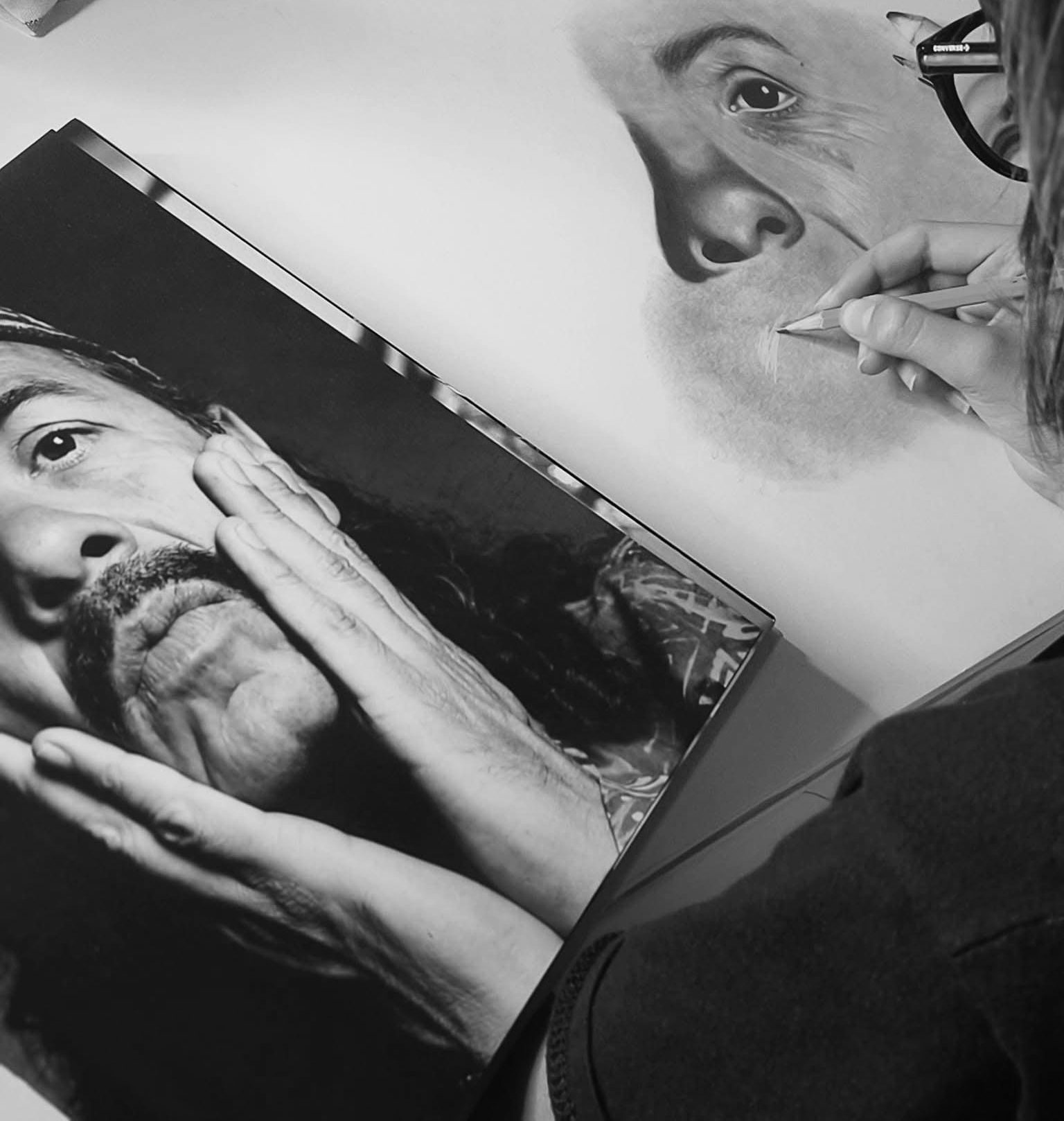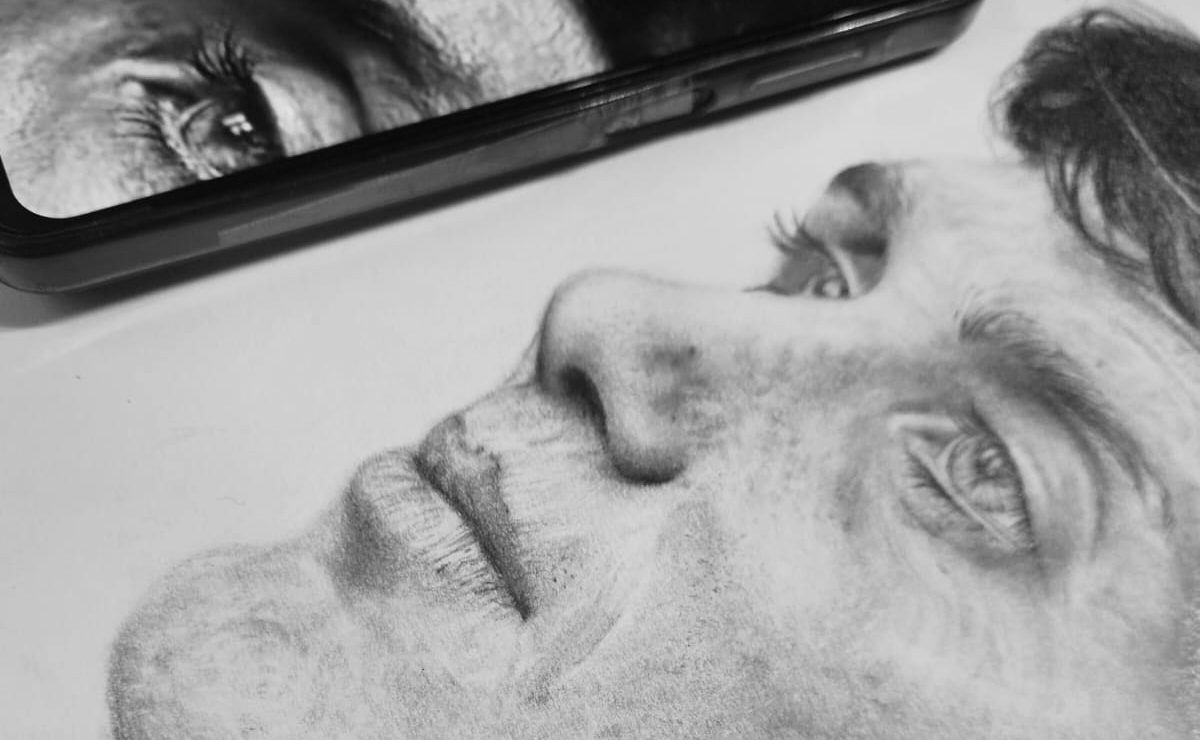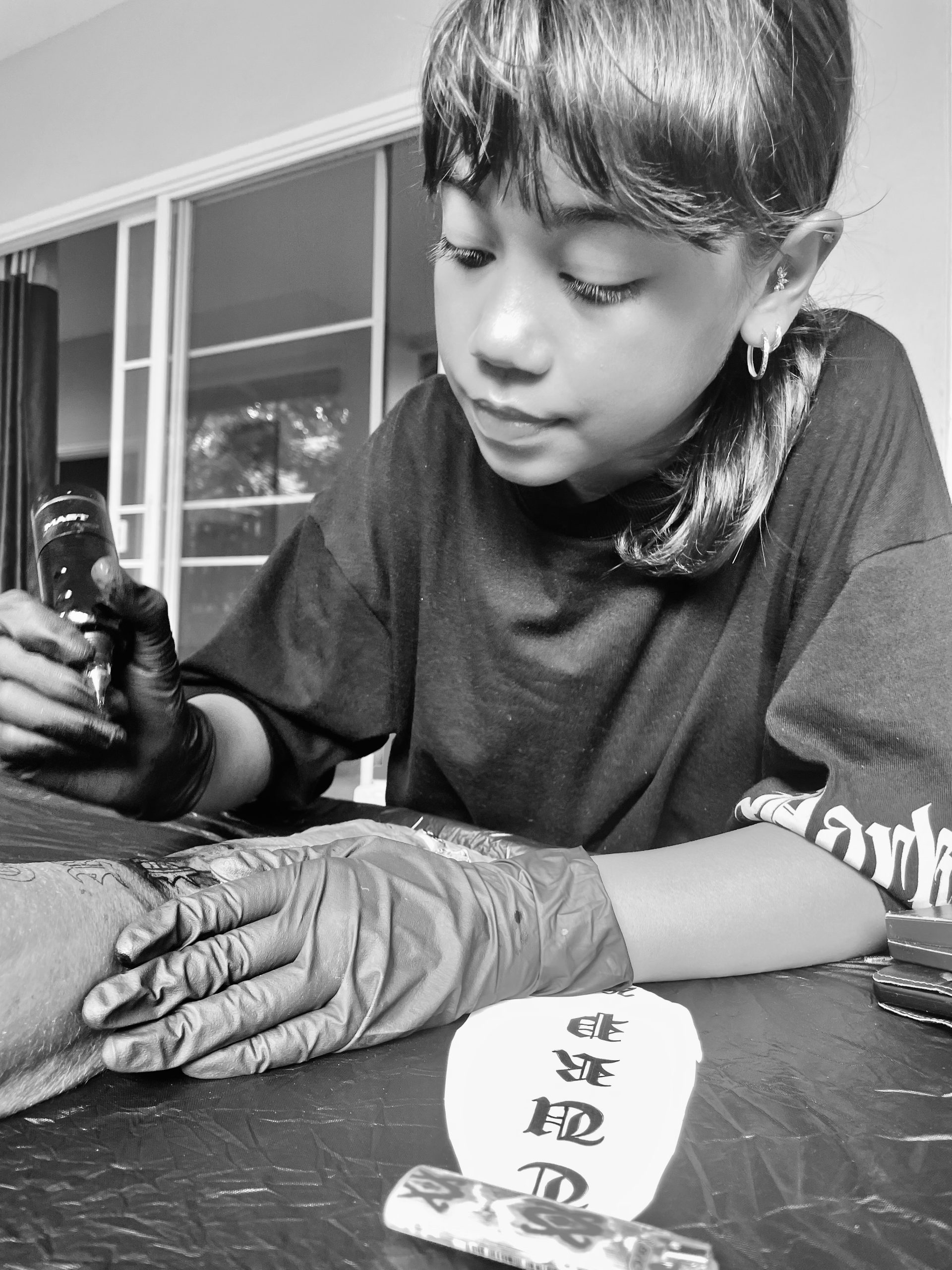BIO
Born to Draw
Bonnie’s love for drawing wasn’t something she discovered — it was something she was born with. From the moment she could hold a pencil, she began turning the world around her into her canvas. As a toddler, she didn’t ask for dolls or games; all she wanted was paper and something to draw with. But when paper wasn’t around, she didn’t hesitate: the walls of her house became covered in doodles, sketches, and miniature universes only she could see. At first, her parents tried to stop her — they repainted the walls, gently scolded her, hid the pens. But it didn’t work. Her talent was undeniable, and eventually, they gave up fighting it. In fact, they started encouraging it. She was so good that they just let her draw wherever she wanted. Walls, doors, furniture — if it could be drawn on, Bonnie filled it with life.
She became the girl who turned her room into a gallery. Visitors didn’t see chaos — they saw art in every corner. And even now, nothing’s changed. Bonnie still draws on walls — only now she does it deliberately, with purpose and vision, sometimes creating full murals straight from her imagination. What began as wild childlike expression became something admired and respected.
As she grew, so did her skill. Other kids drew houses and suns; Bonnie sketched characters with emotions in their eyes. She invented stories and gave them shape, shading faces with surprising attention to detail. She would sit for hours, hyper-focused, while the world spun around her. Her sketchbooks became sacred objects — she took them everywhere: on buses, to the park, to dinner. When she was nine, she filled an entire notebook in just two weeks. At ten, she was doing portraits of her friends using only graphite pencils — soft lines, real shadows, expressions that felt alive. Her teachers noticed. Her friends admired her. But for Bonnie, it was never about praise. It was instinct, compulsion, love.

A Sketchbook in Her Hands, Always
As Bonnie got older, her passion didn’t fade — it evolved. She was never seen without a sketchbook. It became her sidekick, her safe space, her secret language. She carried it everywhere: to school, to parks, on buses, even to family dinners. And she didn’t just sketch lazily — she studied. She drew strangers in cafés, memorized facial expressions, practiced hands and eyes until they felt real. If she ran out of paper, she drew on her jeans, her shoes, even her own arms. Her creativity never shut off. She was constantly observing, absorbing, translating the world around her into graphite and ink. While her classmates were distracted by screens or trends, Bonnie was crafting tattoo designs, creatures with anatomy and soul, emotional portraits with just a pencil. It wasn’t about looking cool. It was just who she was.

Tattooing Before Teenhood
Bonnie’s fascination with body art didn’t come from trends or media — it came from deep inside. From a very young age, she was drawn to tattoos, piercings, stretched lobes, metal, ink, scars — all forms of body modification. She didn’t see them as strange or shocking. She saw them as stories written on skin, ways of owning your identity when the world tries to label you first.
She started drawing fake tattoos on her arms when she was maybe eight, maybe younger — full sleeves, chest pieces, even tiny ankle symbols. She would design full back pieces in her sketchbooks, give them names, imagine the people who wore them and what their stories were. For her, it wasn’t just aesthetic. It was emotional. Every piece had meaning.
She began reading about traditional tattooing, tribal markings, hand-poked techniques, machines, needles. She learned about healing, about ink types, about how different skin tones take color. She was obsessed, but quietly. No big talk, no loud rebellion — just quiet, daily obsession.
At one point — still barely eleven — she decided to try piercing herself. Not to shock her parents, not to prove anything to anyone. Just to feel it. To learn. It wasn’t reckless — it was intentional. Clean. Measured. Like everything she did.
Then came the moment that changed everything. She got her hands on a basic machine — rough, imperfect, not at all studio-quality — and she tattooed for the first time. Not on fruit, not on fake skin. A real tattoo. Done with care, and with her heart racing.
That day, something clicked.
Since then, it’s been just two years — only two — but Bonnie’s growth has been wild. Her linework is precise, confident. Her vision is already distinct. She doesn’t just follow trends — she builds her own visual language. Clients come to her not just for a tattoo, but for her touch, her perspective, her intensity.
She’s still young. But when you see her work, her presence, the way she listens, sketches, breathes through the machine — you feel it: she’s not just good. She’s built for this.
And this is just the beginning.

